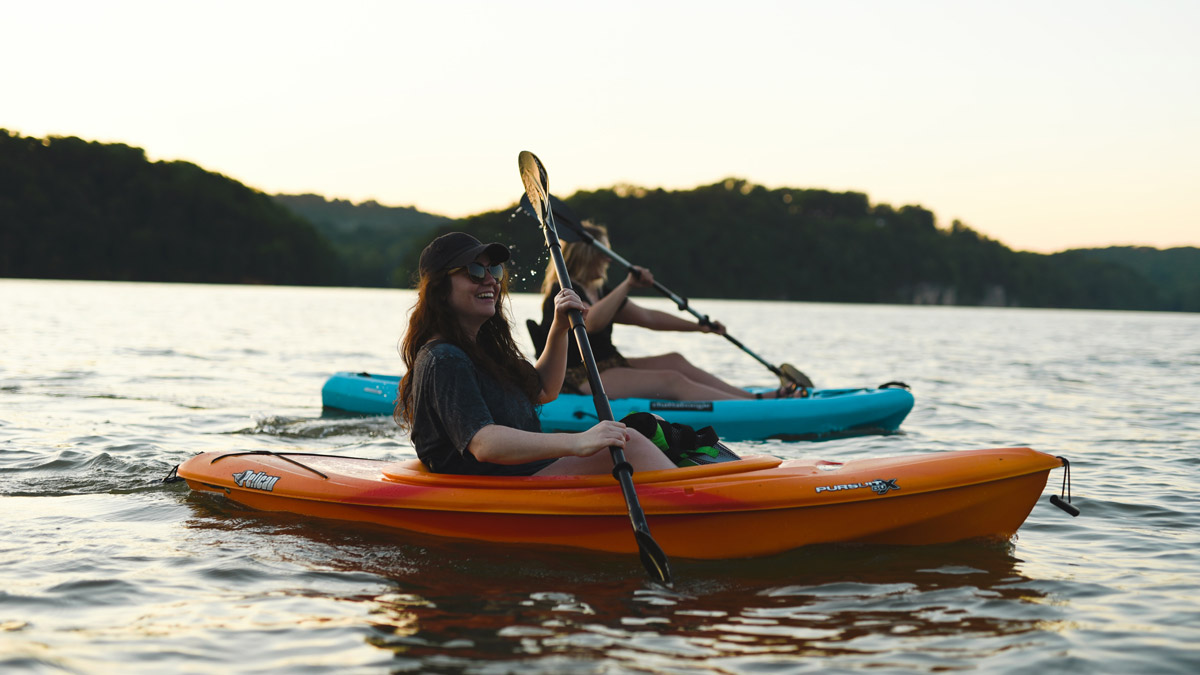

This article was written by Connor, one of our founding editors. Connor is a full-time travel and lifestyle photographer with extensive experience in the outdoors industry.
Over the years, this is a question that has been asked time and time again. It’s a great question, too. In this article, we’re going to do our best to weigh up both types of kayaks and explain, as simply as we can, their advantages and disadvantages.
Spoiler: don’t expect a definitive winner! It’s a very subjective decision and largely boils down to personal preference and intended use.
If you’re new to kayaking, it can seem impossible to choose which kayak to get. Fortunately, it isn’t impossible; it just takes some understanding of kayak design and how that affects the way you use it.
The list of possible uses for kayaks is virtually endless, which is one of the many reasons that choosing which one to buy is so confusing. Kayaks are built for specific purposes and unfortunately, there isn’t a one-size-fits-all design. One of the biggest debates in the sport is whether to opt for a sit-on-top (SOT) or sit-in kayak (SIK).
A SOT is a very popular style of a kayak and as the name suggests, the kayaker sits on top of the deck, rather than being enclosed. Essentially, there is no inside to a SOT. Primarily, it was designed for leisure use, and because of the way it is made, it’s pretty good a handling a bit of surf. Due to it being open, water easily gets onto the deck so there are usually small holes (scupper holes) at the bottom of the cockpit to drain the water.
Conversely, a SIK is a kayak in which the kayaker is enclosed in the hull, with an open cockpit for climbing in and out. There’s often an option to attach a spray skirt which is designed to keep the water from entering the cockpit. A spray skirt is actually worn around the waist of the kayaker and then stretched over the cockpit. This is the traditional style of a kayak and usually comes with adjustable footrests and armrests for comfort.
For a variety of reasons, SOTs tend to be more useful for beginner kayakers and those who have less experience. They’re ideal for family trips and days out on the lake. Here are some of the pros and cons.
· Virtually impossible to sink
· Easy to hop in and out while on the water
· Generally very stable
· Self-bailing with scupper holes to remove water
· Plenty of easy-to-reach storage space
· Often cheaper than SIKs
· You’ll get very wet
· Usually slower and less maneuverability than SIKs
· Less shelter from poor weather conditions
These tend to be preferred by experienced kayakers who like to have a bit more directional control and won’t be hopping in and out as much. Let’s take a look at the pros and cons.
· Much drier because you’re sitting inside the hull
· Good for keeping items drier in the hull
· Sheltered from poor weather, like wind and rain
· Generally faster and more maneuverable than SOTs
· Can’t get in and out as easily
· Hard to control if you’re less experienced
· If you flip, it’s harder to recover your kayak
Like we said at the beginning of the guide, there is no right or wrong answer when it comes to choosing your kayak. Now that you know the main advantages and disadvantages of each kayak, you should ask yourself why you’ll be using it and consider your ability level.
(Notice that we mentioned stability is good on both kayaks? The truth is, stability is largely dependent on hull shape and size and less to do with if it is a SIK or SOT.)